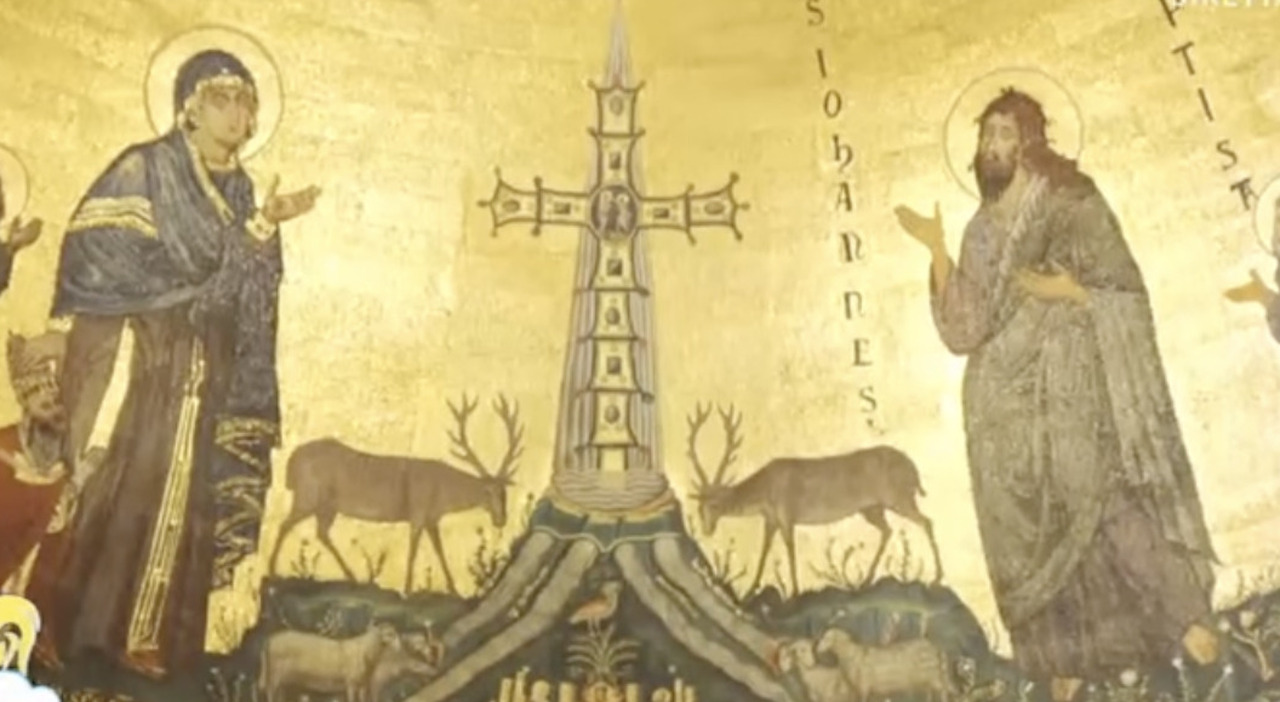In 2024, the Basilica of St. John Lateran, the Mother Church of Christianity and an irreplaceable point in the history of the West, turns 1700 years old. For over ten centuries, it was the papal residence before the popes moved to Avignon during the period of the Avignon captivity, and subsequently decided to move the residence to the Vatican. Two hundred and fifty councils were held within its walls, five of which were ecumenical, including the Fourth Lateran Council in 1215, considered by historians to be the most important of the Middle Ages as it was entirely aimed at ensuring a universal Christian society.
The Basilica of St. John Lateran was consecrated on November 9 of the year 324 by Pope Sylvester I, who later became a saint, whose pontificate coincided with the long reign of Constantine, the first Roman emperor to accept Christianity, marking the transition from pagan Rome to Christian Rome. It was Constantine who donated those lands to the Church to build a domus ecclesia. According to Tacitus' Annals, the lands and properties initially belonged to the powerful Laterani family. However, Nero confiscated their possessions in 65 because they participated in the 'Pisoni' conspiracy. After the conspiracy failed, the consul Plauzius Lateranus was sentenced to death and his wealth passed to the Imperial Treasury.
Pope Sylvester dedicated the patriarchal archbasilica of the Lateran to Christ the Savior. Only during the 12th century was it also dedicated to St. John the Baptist. The sacred building originally became famous for its splendor and was the object of continuous and important donations from emperors, popes, and other benefactors, as evidenced in the Liber Pontificalis.
In the Lateran palace, the most significant events of history have intertwined with the dynamics of the Church. The coronation of emperors, audiences with kings and queens, including the signing of the Lateran Pacts, signed by the Vatican Secretary of State Gasparri and then head of government Benito Mussolini. The original document is kept on a desk in the Sala dei Pontefici, now a museum. Until the 19th century, all popes were crowned in the Lateran, but after the breach of Porta Pia, the custom was abandoned. The building we know today has undergone various design phases, expansions, and modifications compared to the original early Christian building. On July 28, 1993, the side entrance and part of the facade of the palace were severely damaged by a dynamite attack commissioned by the mafia that damaged the facade.
The original early Christian building underwent several changes throughout history because it was damaged by some earthquakes. The earthquake in 896, for example, almost completely destroyed the basilica, which was almost completely restored by Pope Sergio III (904-911). Later, the church was also heavily damaged by a fire in 1308 and 1360. However, the apex of the glory of the new Lateran basilica came on February 22, 1300, when Pope Boniface VIII announced the first Jubilee there.
Until the 14th century, the Palace was the residence of the Popes, then the seat was moved to Avignon, in France (1304-1377). Once back in Rome, the pope of the time found himself managing the entire area of the Lateran, now in a state of total abandonment, the palace had been looted over the years and the surrounding areas had become a place of brigandage. The degradation was almost total. The papal residence thus moved to the Vatican.
ARCHITECTS
The present-day Lateran basilica has five doors, one for each nave, marked by massive columns that support monumental arches. The central bronze doors are original Roman from the Senate in the Imperial Forums. The door on the right is the Holy Door, which is only opened during the Holy Year (once every 25 years). It will reopen in 2025. Opposite the left wall is the statue of Emperor Constantine. The twelve huge niches that Francesco Borromini created in the columns of the central nave contain majestic marble statues of apostles. Despite Borromini's rigorous renovation, some historical testimonies remain clearly visible. In particular, the magnificent cosmatesque-style floor and the golden wooden ceiling, made by Giacomo della Porta based on a design by his patron, Michelangelo. The final renovation of the current church was wanted by Pope Sixtus V who entrusted the work to his trusted architect Domenico Fontana.
This article is automatically translated
